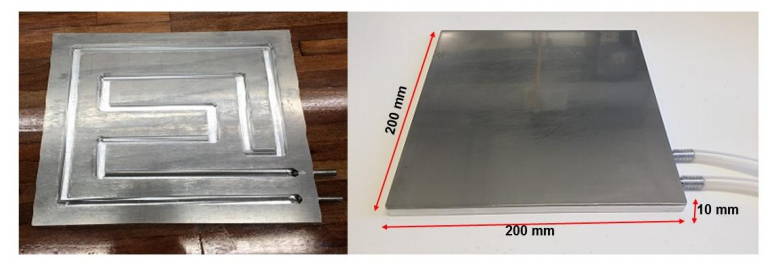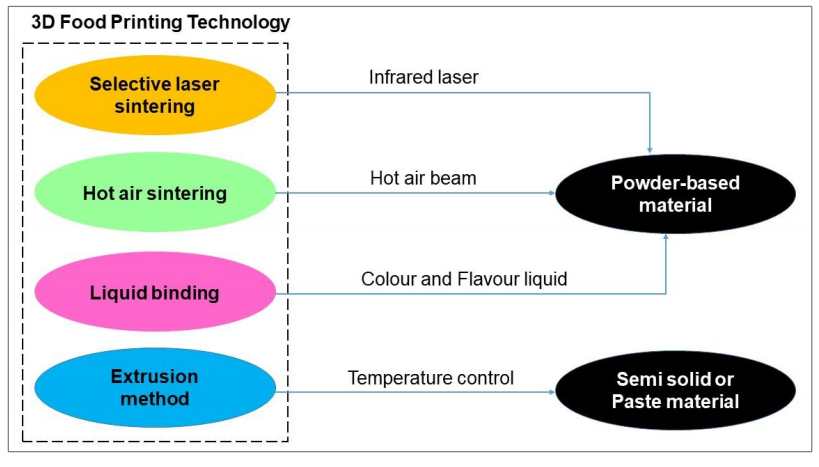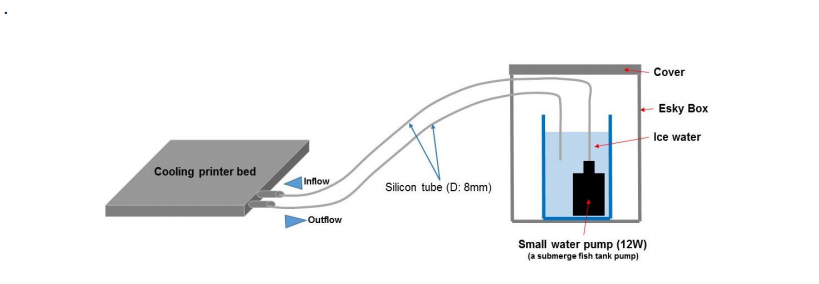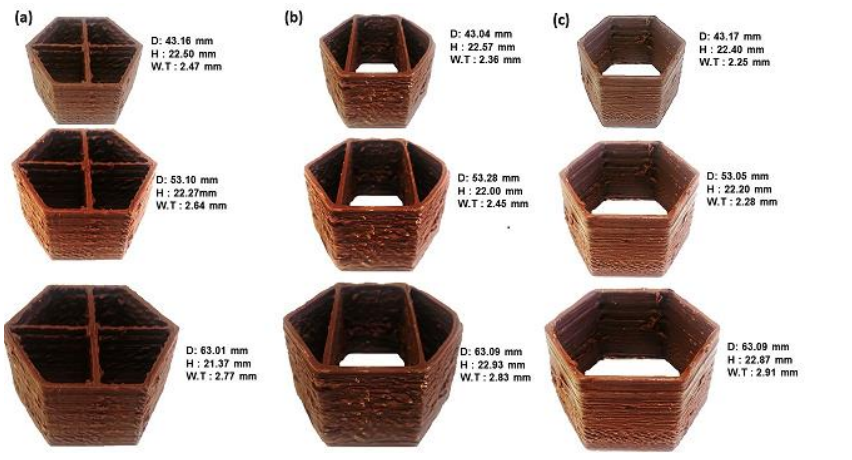University of Queensland: 3D Food Printing & The Potential of Chocolate
Sylvester Bin Mantihal recently submitted a thesis to the School of Agriculture and Food Sciences at the University of Queensland. In ‘3D food printing: assessing the printability of dark chocolate,’ the author focuses on the benefits of using the layered technique for futuristic food production, whether produced via paste or extrusion.
The general response to any mention of 3D printing with chocolate is “I want some!” There are countless other critical applications where 3D printing is making huge strides—from the medical field to automotive and aerospace, but most people seem to have an affinity for learning more about extruded foods–and especially the desserts. Bin Mantihal points out that chocolate offers enormous potential in 3D printing because it is so easy to melt, as well as solidify.
Analysts predict that 3D printing overall will rise to $21 billion by the end of this year, continuing to impact the aforementioned industries. To see chocolate progress further in 3D printing, however, improvements need to be made to features like structure and texture.
“Although chocolate has been widely reported to augment information to the pool of knowledge, there is a limited study on chocolate printability and the incorporation of flow enhancer (food additives in powder form) in 3D chocolate printing,” states Bin Mantihal. “Hence, the focus of the current work will be to develop personalized dark chocolate using a 3D food printer and to verify the suitability of the process, the ingredients and the use of a flow enhancer.”
Along with chocolate, sugar, gel, and dough can also be integrated into the 3D printing process, and used in numerous applications:
- On the individual level
- Restaurants, cafes, bakeries
- Industrial scale food production
- Hospitality industry

3D construct made by selective hot air sintering and melting (SHASAM) (a) SHASAM process (b) toroidal coil sculpture made of granulated sugar (Oskay & Edman, 2006). These images were reproduced from the data available at http://candyfab.org/ (c) Complex sugar geometry with fine colour detail (d) colourful sugar candies. These images were reproduced from the data available at http://www.3dsystems.com/culinary/gallery.

3D printed lemon juice gel printed at 24 mm3/s extruder rate, 1.0 mm nozzle size (a) anchor (b) gecko (c) snowflake (d) ring (e) pyramid. Adapted from Yang et al. (2018)

Representative images of dough printed using the Porimy 3D printer with various sucrose compositions (a) 3.3/100 g of formulation; (b) 5.0/100 g of formulation; (c) 6.6/100 g of formulation; (d) 8.2/100 g of formulation. Adapted from Yang et al. (2018).
“Texture is the main attribute to determine the quality of a 3D printed food product. This modality is important as it will influence its acceptance. With 3DP technology, one can create a customized design that can create a new texture of food,” stated Bin Mantihal.
First, Bin Mantihal made customizations to the 3D printer being used in the study, including modifying parameters for the material at hand: powdered dark chocolate (Lindt Piccoli Swiss, Australia dark chocolate with 58% cocoa solid (non-fat), cocoa butter (33% w/w), anhydrous milk fat (5 %), soy lecithin (0.5 %) and vanilla flavor).

Schematic diagram of Porimy 3D chocolate printer printing mechanism (1. Information and control display screen, 2. Navigation knob, 3. SD card slot, 4. Printer bed, 5. Printer hopper, 6. Nozzle, 7. Heating component).

Flow diagram of the chocolate 3D printing process, starts with 3D design and proceeds to 3D printing process.
The author focused on the following additions to the Porimy Chocolate 3D printer:
- Development of cooling printer bed
- Cold water circulation system
- Printer bed support
- New printing parameters
- Optimization of nozzle height

Cooling printer bed made in this study. The recirculation tubes (diameter 0.8 cm total 80 cm length) are enclosed as heat exchanger inside the plate.

3D chocolate printing system with additional feature (a) water circulation system (b) custom printer bed.
The following features were then evaluated:
- Flow behavior
- Thermal properties
- Structure and geometry of resulting prints
- Measurement of constructs
“In this study, 3D constructs were successfully built using chocolate as model edible ink. Rheological measurements and determination of thermal profile helped to set operational conditions of the 3D printer based on melting point temperature. Printability was only achieved by the incorporation of Mg-ST which acted as flow and lubricant enhancer of the material during the printing process. It has been demonstrated that the inclusion of support structures during the design of the geometry plays an important role on snap quality and self-support properties,” concluded the author.
“Cross-support was more effective than parallel-support on creating more stable hexagonal shaped constructs. This was shown by the higher snap force required to break the sample using a texture analyzer. We emphasize that the printing parameters established in this study may only be applicable to chocolate printing. However, our results bring important insights for future research involving printability optimization of edible inks. In the next chapter, a comprehensive research is being undertaken to investigate the effect of additives on thermal, flow and tribological properties on 3D printed dark chocolate.”

3D chocolate printed using Porimy 3D printer (a) mickey mouse shape (b) heart shape (c) box with hollow square hole (d) cylinder shape. (Printing condition: Speed 70mm/s, Nozzle size 0.78mm and extrusion temperature 32 ºC)

The effect of improper temperature setting on dark chocolate after extrusion (a) extruded chocolate at high temperature (>36 ºC) (b) chocolate was not solidified and collapsed during extrusion.
What do you think of this news? Let us know your thoughts! Join the discussion of this and other 3D printing topics at 3DPrintBoard.com.
[Source / Images: ‘3D food printing: assessing the printability of dark chocolate’]
Subscribe to Our Email Newsletter
Stay up-to-date on all the latest news from the 3D printing industry and receive information and offers from third party vendors.
Print Services
You May Also Like
3D Printing Grows to $15.9B in 2024 Amid Shifting Industry Dynamics
The global additive manufacturing (AM) market reached $15.9 billion in calendar year 2024, according to “Q4 2024 3DP/AM Market Data and Forecast” from Additive Manufacturing Research (AM Research). Despite a...
Low-cost “Suzy” Polymer Powder 3D Printer is Faster and Cheaper than Past Models
Polish laser powder bed fusion (LPBF) firm Sinterit has released a follow-up to its predecessors, Lisa and Nils, called Suzy, a $19,490 printer equipped with a 30W fiber diode laser....
BellaSeno’s 3D Printed Breast Implants Keep Shape with 87% Fat Volume, Avoids Silicone Risks
At a medical conference in Austin this week, a new kind of breast implant took center stage. It is not made from silicone but from a 3D printed, fully resorbable...
Australia’s Untapped Potential as a Disruptive Innovator: SPEE3D CTO Steven Camilleri Explains Why He Wants to Make Stuff There
When I first met Steven Camilleri in 2023, the CTO of additive manufacturing (AM) OEM SPEE3D shared a quote with me from Clayton Christensen, the late Harvard professor who popularized...
































